- Home
- |
- Our Culture
- Louis Riel
- Métis Firsts in North America
- Métis Minute
- Who are we?
- Métis Nation Database
- Kids' Corner
- I Love to Bead Month
- |
- Departments / Affiliates
- Citizenship
- Culture & Heritage
- Early Learning & Child Care
- Economic Development
- Engagement and Consultation
- Energy, Infrastructure & Resource Management
- Health & Wellness
- Housing and Property Management
- Infinity Women Secretariat
- Louis Riel Capital Corporation
- Louis Riel College
- Louis Riel Institute
- MEDOCare Pharmacy
- Métis Child and Family Services Authority
- Métis Employment & Training
- Métis Justice Institute
- Métis Rights & Constitution
- Michif Language
- Provincial Education
- Red River Métis Business Development Corporation
- Red River Métis Community Resource
- Red River Métis Fur Company
- Red River Métis Veterans
- Riel House
- Sixties Scoop
- Youth
- |
- Government
- |
- Jobs
- |
- News
- |
- Contact
Dufferin Gang
November 10, 2022
Dufferin Gang's legacy lives on
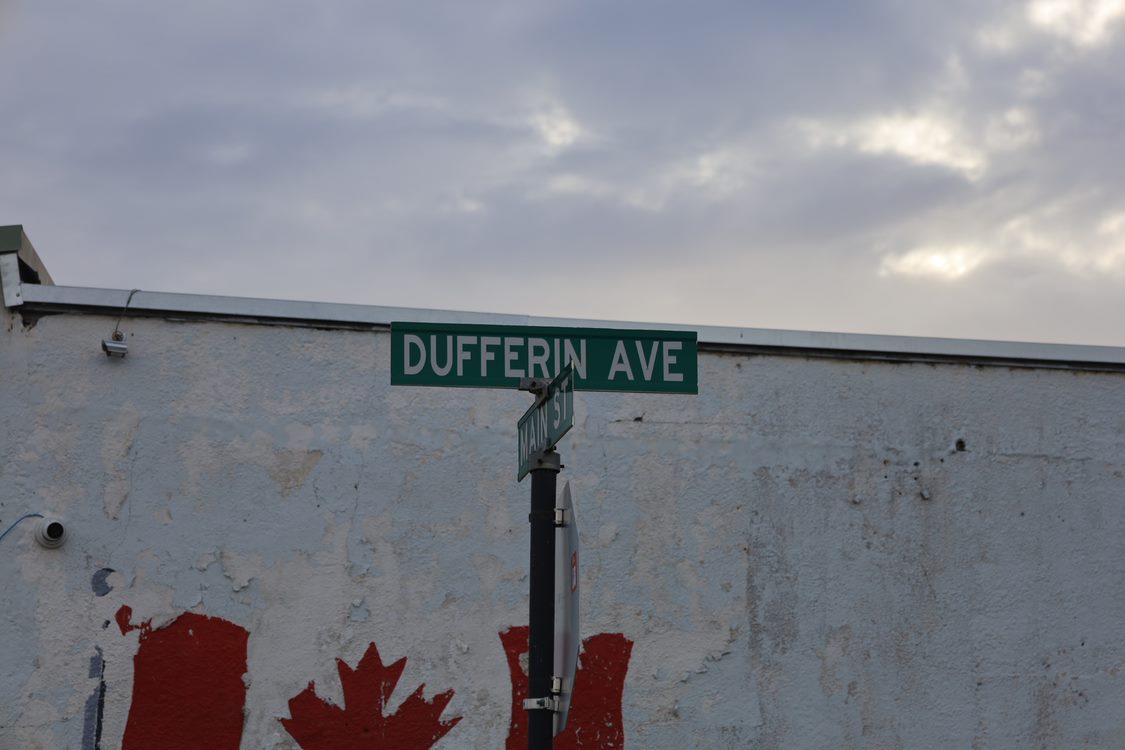 The Dufferin Gang consisted of 35 members that all enlisted from the same block.
The Dufferin Gang consisted of 35 members that all enlisted from the same block.
November 8 is Indigenous Veterans Day, a time to mourn, remember, and reflect upon the sacrifices Red River Métis, Inuit, and First Nations soldiers made to protect Canada's freedoms.
World War II spanned from 1939-1945, and over 3,000 Indigenous soldiers enlisted, including many Red River Métis soldiers who served but were not officially recognized. During WWII, over 44,000 Canadians lost their lives in combat.
Red River Métis Veterans hailed from across our Homeland, but Selkirk was a hotspot for Red River Métis soldiers. A group of 35 soldiers residing in the same neighbourhood, commonly known as the Dufferin Gang, enlisted in WWII and is unofficially known to be the highest concentration of soldiers who fought or served from a single Canadian neighbourhood.
Jack Norquay is one of the many Red River Métis Veterans from the Dufferin Gang who served in the Royal Canadian Air Force (RCAF).
Jack enlisted in 1942 and started operations training in the spring of that year. He was part of an all-RCAF crew with the No. 77 Squadron based in Elvington, Yorkshire - a village in England. During WWII, Jack took part in two successful missions over Hanover, Germany before he was killed in action.
"Jack was a nose gunner in a Halifax bomber and had done several missions before their plane was shot down. (It was) one of the few planes they knew (the location of) where it was shot down, and they got all the information," said Scott Norquay, Jack's nephew. "It was just outside Hanover, Germany, and they found the aircraft and the bodies (in Jack's plane) and were properly buried."
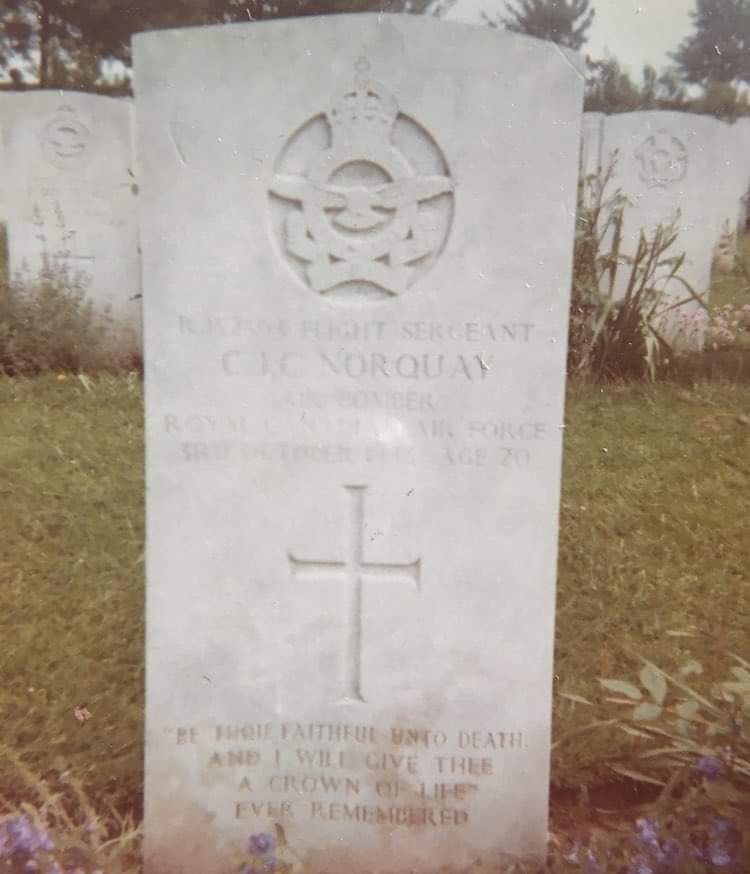
Red River Métis Veteran Jack Norquay's final resting place.
Jack was the recipient of WWII medals such as: the Air Crew Europe Star, awarded for two months of service in an air operational unit; the Defence Medal, awarded to Canadians for six months of service between 1939 and 1945; the 1939-1945 Star, awarded for serving as a full-time aircrew for a minimum of two months; the Canadian Volunteer Service Medal, for a person of any rank who voluntarily served and completed 18 months of voluntary service from 1939-1947; the Bomber Command Bar, for Canadian Veterans who served a minimum of one day with the Bomber Command between 1939-1945. After Jack perished, his family was awarded the Memorial Cross, which is given to the next of kin of Canadian soldiers who died during active duty.
Scott believes that at least 26 members of the Dufferin Gang were Red River Métis.
"That's from one block. I've always thought (the city should) keep the name Dufferin as the street, but I would like to see that one-block stretch turned into a Dufferin Gang Memorial Block or something like that," he said. "They did Valour Road in Winnipeg for three or four Veterans, which is great, but this is something I don't believe (happened) anywhere else in Canada."
There has been some debate about how many Veterans were a part of the Dufferin Gang. Originally there were thought to be 29 members. Thanks to new information over the past several years, that number has climbed to 35 members, with the possibility of more members being discovered.
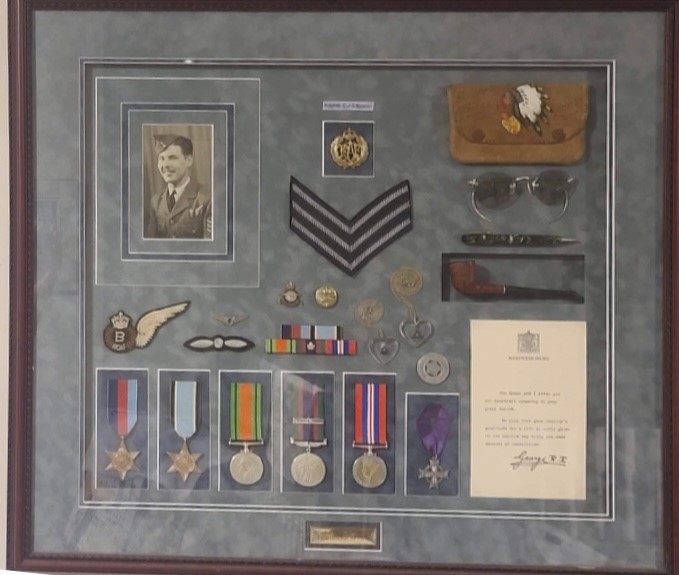
Jack's war medals and personal belongings are displayed and neatly framed.
Scott noted he is proud that his uncle served in WWII and appreciates the recent focus on the Dufferin Gang.
"There were a lot of Métis Veterans based out of Selkirk and surrounding areas, but they all went to go and serve (because there) was pride in (our) country and pride in (our) community," he said. "That's a huge factor in a lot of the families I still know from the Dufferin Gang and their relatives. It was community, they were going to protect their community, and it was no different than we would have hundreds of years ago. It was all about defending (the) community and protecting (the) community at all costs."
Another Red River Métis member of the Dufferin Gang was Roderick Fiddler, who served as a Petty Officer for the Royal Canadian Navy.
During WWI, Roderick was responsible for looking after the boilers on navy ships such as the HMCS Kenora, a minesweeper ship and HMS Wolverine, a destroyer ship. During WWII, Roderick was a part of the crew on the HMCS Windflower, which played a role as a convoy escort in the Battle of the Atlantic. On December 7, 1941, the HMCS Windflower collided with a merchant ship due to thick fog. After the HMCS Windflower's lifeboats were deployed, escort ships were unsure of what sunk the ship due to the thick fog and fired at the lifeboats assuming they were enemy U-boats. Roderick was one of 23 crew members killed.
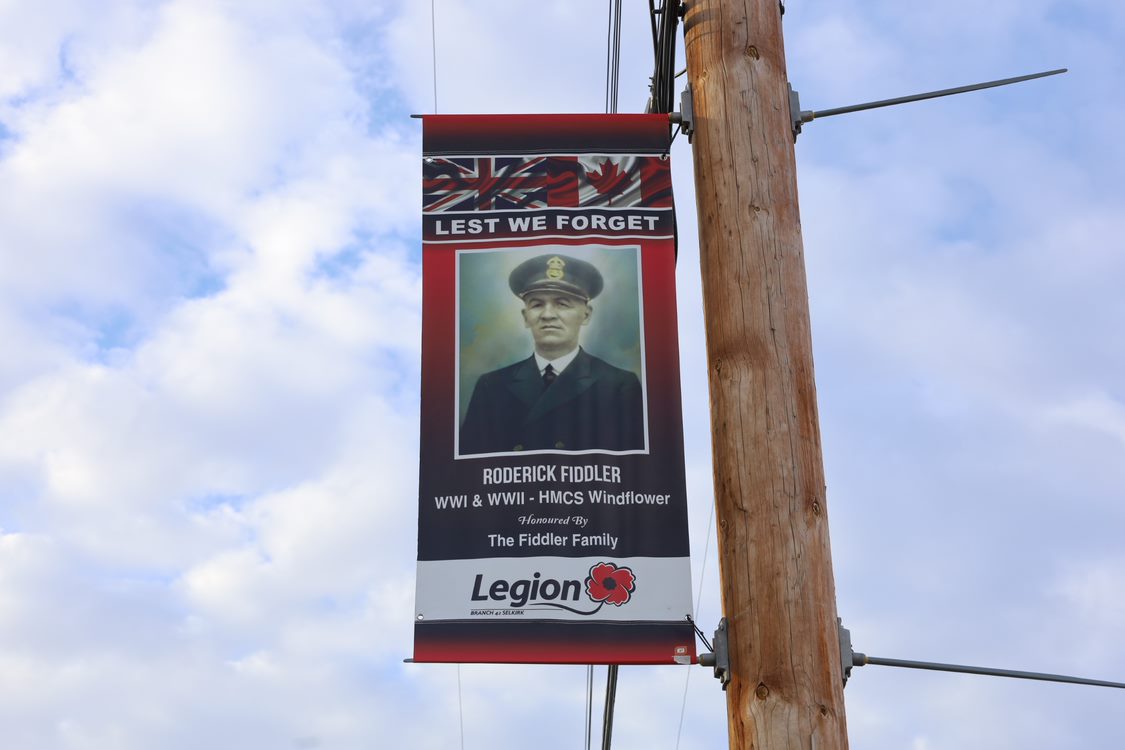 A banner with a photo of Roderick Fiddler's portrait towers over a street in Selkirk.
A banner with a photo of Roderick Fiddler's portrait towers over a street in Selkirk.
"I think it's amazing how that many (people) from that one block all served. My grandpa was 52 (during) the Second World War. He served in both (wars), and that's old for them to take somebody that old," said Roderick's grandchild, Nola Fiddler.
"I guess there was a shortage of engineers, so they took him at 52 and my uncle (served) as well. (My) grandpa was in the Navy, and (my) uncle (Raymond) was in the Air Force during World War Two, but never fully served," she added, referring to Raymond Fiddler, who was also a part of the Dufferin Gang.
One way the City of Selkirk has recognized and honoured the Dufferin Gang was by commissioning a mural on 453 Main Street to honour their service. The mural contains a brief overview of the Dufferin Gang, depicts air, land, and sea forces, and the names of the Veterans who hailed from Dufferin Ave.
After the mural was finished, Scott believed it was long overdue to recognize all the men and women that had gone over and enlisted.
"(It's) the pride and recognition in the families that had brothers, sons, nephews, and fathers go overseas, and an awful lot of them did not come back. They went there because it was their sense of duty, their sense of community, and their sense of who they are by going to defend their country and going to defend their community," he said. "It's a huge sense of pride. I'm fortunate because I live two blocks away from it, so I spend a lot of time there."
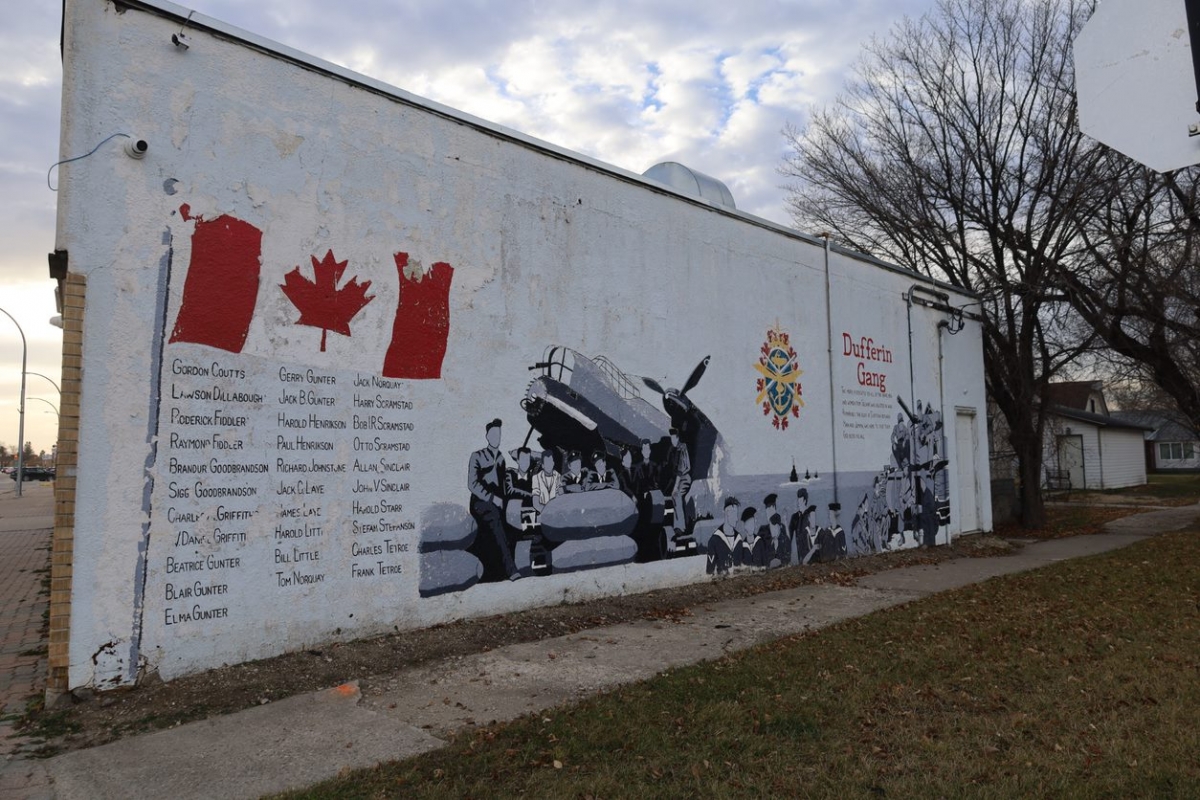 A mural dedicated to the Dufferin Gang is located at 453 Main Street in Selkirk.
A mural dedicated to the Dufferin Gang is located at 453 Main Street in Selkirk.
Other Dufferin Gang enlistees included a father who lied about his age to enlist, a man who lost an eye in an explosion on D-Day and rescued a fellow soldier, and five siblings who all safely returned home to their mother after the war.
The 35 known members of the Dufferin Gang are Gordon Coutts, Lawson Dillabough, Raymond Fiddler, Roderick Fiddler, Brandur (Lefty) Goodbrandson, Siggi Goodbrandson, Charles (Charlie) Griffiths, Beatrice Gunter, Blair Gunter, Elma Gunter, Gerald Gunter, Jack B. Gunter, Harold Henrikson, Paul Henrikson, Richard (Dick) Johnstone, Jack C. Laye, James (Jim) Laye, William (Bill) Little, Harold Little, Bill McLean, Dunc McLean, Eric McLean, John McLean, Jack Norquay, Thomas (Tom) Norquay, Harold (Harry) Scramstad, Ingwald (Bob) Scramstad, Otto Scramstad, Allan Sinclair, John V. Sinclair, Harold Starr, Stefan Stephanson, Charles (Bud) Wilfred Tetroe, and Frank Tetroe.
Scott Norquay believes It's crucial to keep the legacy of Red River Métis Veterans alive because they are a big part of our history, culture, and who we are as Red River Métis.
"This is the call to arms we've made. We needed to protect our community, we needed to defend our country, we were asked to help, and that was the first thing we did was jump to help," said Scott. "That knowledge, moving forward to younger generations, helps to instill the pride of this is who you are, and this is why you feel this way."
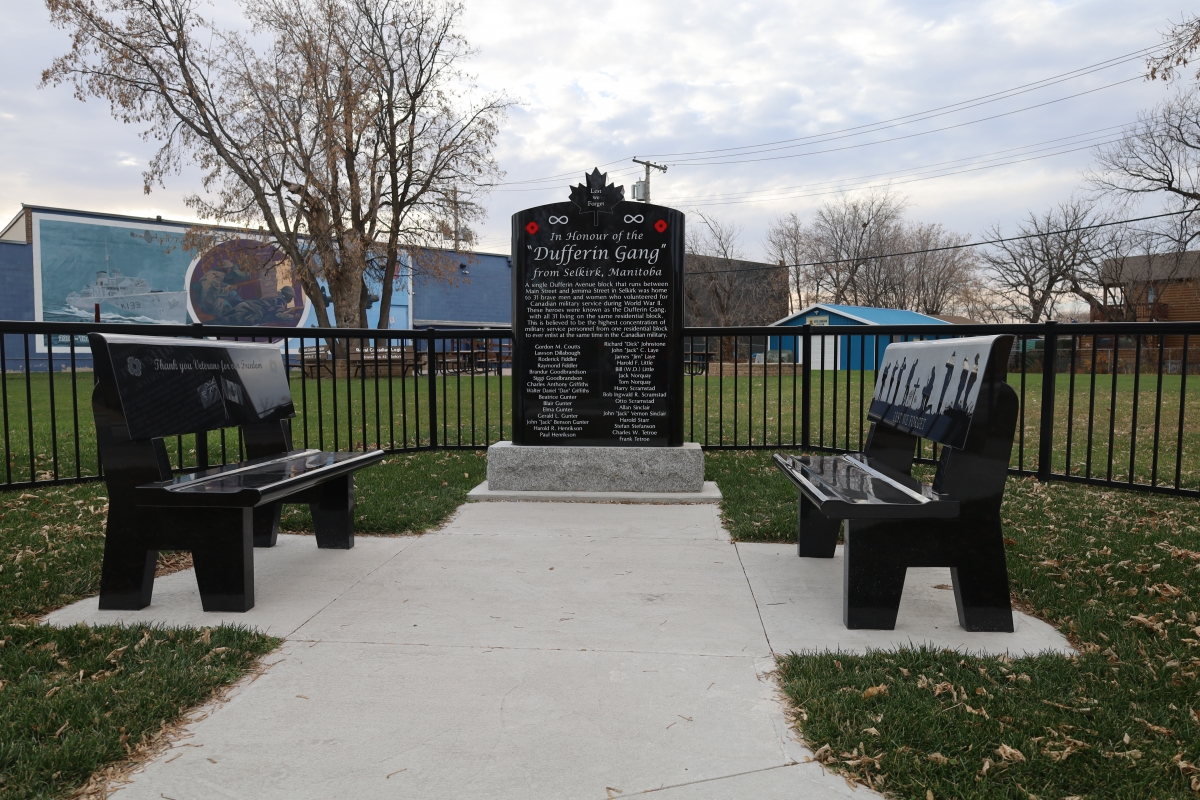 A monument recently unveiled near the Selkirk Legion contains all the names of Dufferin Gang members.
A monument recently unveiled near the Selkirk Legion contains all the names of Dufferin Gang members.
The City of Selkirk recently unveiled a monument to commemorate the Dufferin Gang. A ceremony took place in September 2022, and many dignitaries were on hand to celebrate, including Manitoba Métis Federation Ministers Jack Park and Shawn Nault, who are both Veterans. The monument lists all the names of those in the Dufferin Gang.
Selkirk Mayor Larry Johannson also attended the ceremony and said he was very pleased with the Dufferin Gang recognition as well as the effort the City of Selkirk takes to highlight them.
"We're proud and honoured to put the banners up, and we're extremely proud of the men and women that fought so courageously from Dufferin Avenue," he said. "We're also equally proud of the descendants that worked hard on the committee to have a monument erected at the local Legion and, of course, getting the banners up."
Scott is thrilled to see the city taking part in honouring the Dufferin Gang and the sacrifices they made.
"I think the biggest surprise is that it's taken so long for people to become aware of this, and now that people are aware of it, more and more people are (becoming) aware of (the Dufferin Gang)," he said.
Scott noted at one point there were discussions about placing the monument at the corner of Dufferin Ave., but that property was unavailable.
"So, it ended up on the corner of the Legion grounds, which is a wonderful place for it. It's a beautiful monument, and the emotion of the monument itself is hard to put into words," he said. "The emotion of the event is something that will be a lifetime memory, and just the volume of people that showed up, both surviving family members, a lot of Legion members, and other Veterans that knew an awful lot of the other members that were in the Dufferin Gang. As well as citizens from of town, we had people from Winnipeg come out, and people from surrounding areas come out."
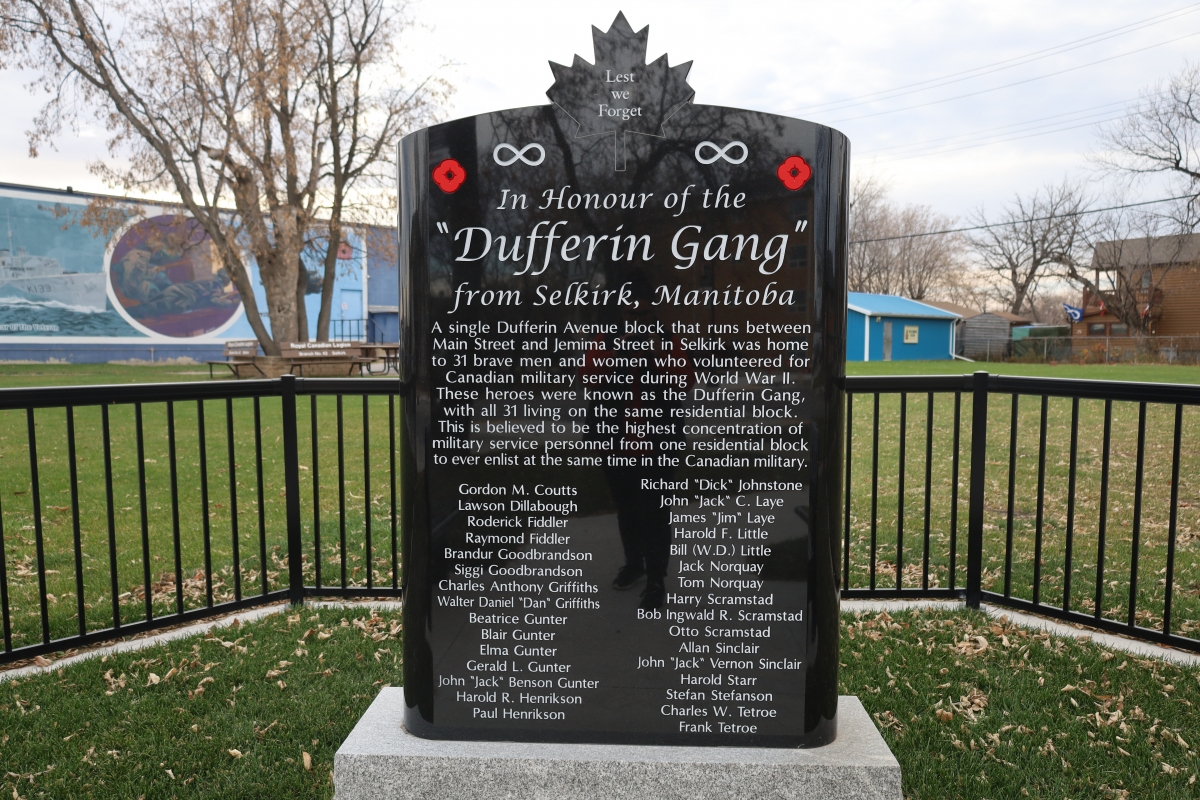 The Dufferin Gang monument was unveiled in September 2022.
The Dufferin Gang monument was unveiled in September 2022.
Nola Fiddler also attended the ceremony and had nothing but positive memories from the event.
"It's beautiful. It was a good job put on by the Legion. It's gorgeous, the benches and even the fence around it," she said. "I thought it was well done and a very fitting tribute."
Nola appreciates how the younger generations are taking an interest and pride in the Dufferin Gang's history.
"My oldest nephew has my grandpa (Raymond) tattooed on his arm. The picture that's up on my grandpa's flag is on my nephew Luke's arm. It's just amazing, whomever his tattoo artist was," she said. "I'm glad to see younger kids are so proud as well."
As a Red River Métis Citizen and a surviving family member of the Dufferin Gang, Scott said there is a lot of pride from relatives and family friends about the Dufferin Gang.
"Not surprisingly, an awful lot of the families are related to the Dufferin Gang, so a lot of cousins that I knew were in the Dufferin Gang. The Littles were first cousins (of mine), and I remember them growing up. I remember Harold coming back and talking to him about some of the stories I heard," he said. "What they kept counting on is the community. This is who we are, and this is what we do, and when asked to help, we help."
Scott said he's been fortunate to give back and carry on the sense of community his uncle had, whether it's being a past president of the Kinsmen Club, helping the Manitoba Métis Federation, or anything else that comes up.
"It is very much in our DNA that when called to arms or called to help, we're at the forefront. (We) always have been and always will be," he said. "It's a touching monument and a very touching subject. It's near and dear to my heart, and the pride in the community and our Red River Métis community as it grows is hard to put into words. It's amazing."
